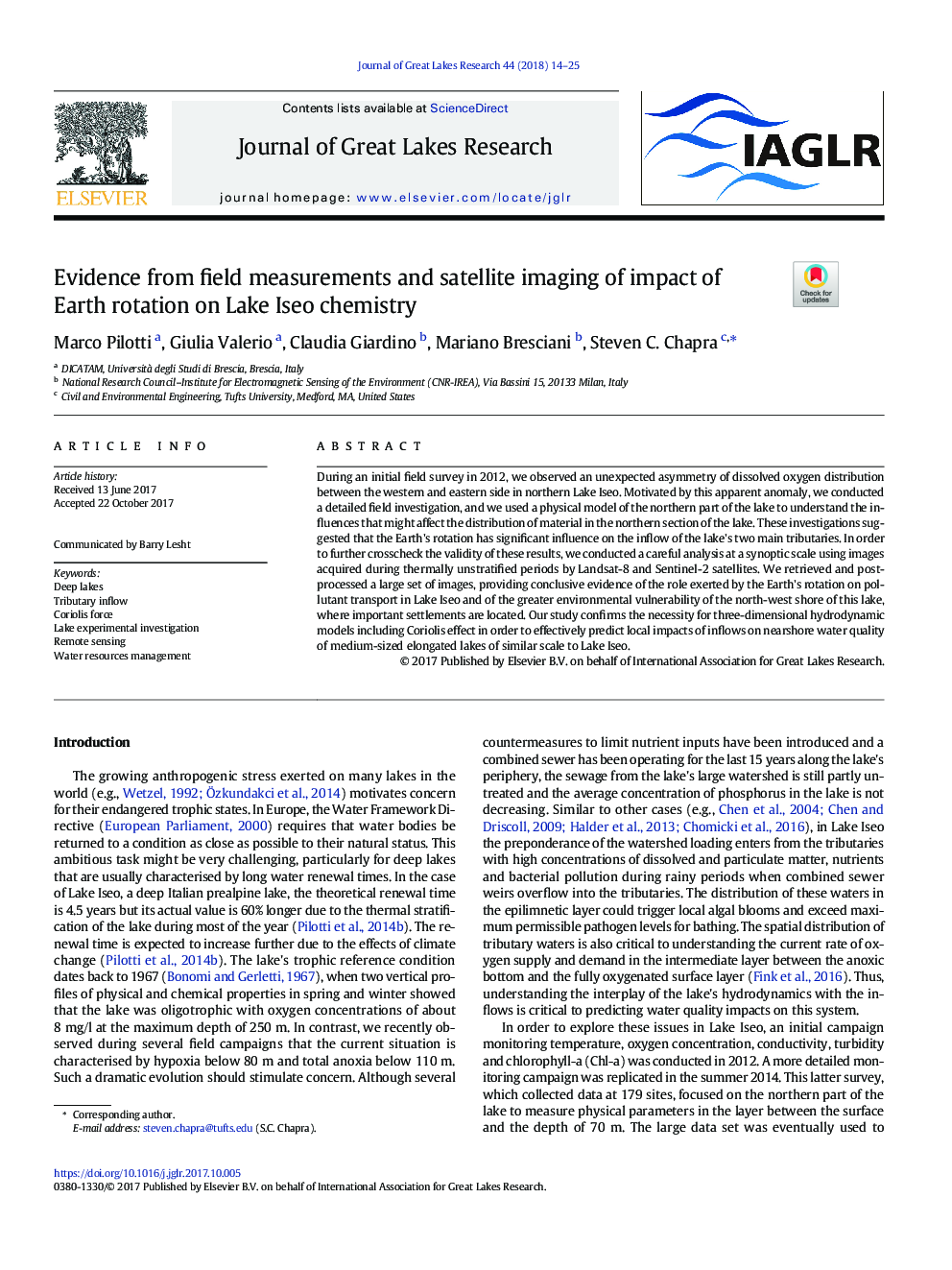| Article ID | Journal | Published Year | Pages | File Type |
|---|---|---|---|---|
| 8849145 | Journal of Great Lakes Research | 2018 | 12 Pages |
Abstract
During an initial field survey in 2012, we observed an unexpected asymmetry of dissolved oxygen distribution between the western and eastern side in northern Lake Iseo. Motivated by this apparent anomaly, we conducted a detailed field investigation, and we used a physical model of the northern part of the lake to understand the influences that might affect the distribution of material in the northern section of the lake. These investigations suggested that the Earth's rotation has significant influence on the inflow of the lake's two main tributaries. In order to further crosscheck the validity of these results, we conducted a careful analysis at a synoptic scale using images acquired during thermally unstratified periods by Landsat-8 and Sentinel-2 satellites. We retrieved and post-processed a large set of images, providing conclusive evidence of the role exerted by the Earth's rotation on pollutant transport in Lake Iseo and of the greater environmental vulnerability of the north-west shore of this lake, where important settlements are located. Our study confirms the necessity for three-dimensional hydrodynamic models including Coriolis effect in order to effectively predict local impacts of inflows on nearshore water quality of medium-sized elongated lakes of similar scale to Lake Iseo.
Related Topics
Physical Sciences and Engineering
Earth and Planetary Sciences
Earth and Planetary Sciences (General)
Authors
Marco Pilotti, Giulia Valerio, Claudia Giardino, Mariano Bresciani, Steven C. Chapra,
